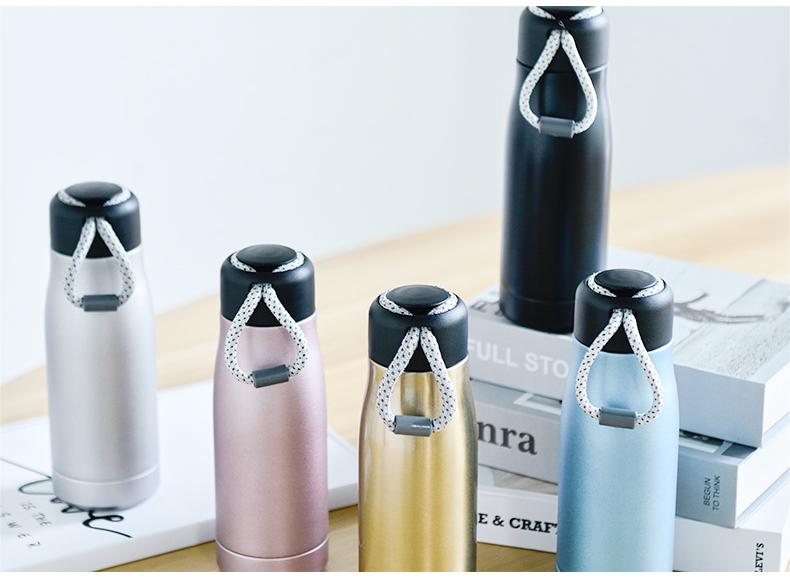Introduction
When it comes to thermal insulation, the shape of a bottle can significantly influence its ability to retain heat or cold. Whether you’re looking to keep your coffee hot or your water cold, understanding how different bottle shapes affect insulation can help you make a more informed choice. This guide explores the science behind bottle shapes and their impact on insulation, drawing on recent research and expert insights.
1. Basic Principles of Thermal Insulation
1.1 Heat Transfer Mechanisms
To understand how bottle shape impacts insulation, it’s essential to grasp the basics of heat transfer. Heat can be transferred through conduction, convection, and radiation. In the context of insulated bottles, conduction is the primary concern, as it involves the transfer of heat through solid materials.
1.2 Role of Vacuum Insulation
Many modern insulated bottles utilize vacuum insulation, where a vacuum layer between two walls minimizes heat transfer. This design effectively reduces the conduction of heat, keeping the contents at a stable temperature for extended periods.
2. How Bottle Shape Affects Insulation
2.1 Surface Area and Heat Exchange
The shape of a bottle affects its surface area, which in turn influences heat exchange. A bottle with a larger surface area relative to its volume will lose heat more quickly than one with a smaller surface area. For example, a tall, narrow bottle will generally retain heat better than a short, wide one because it has less surface area exposed to the external environment.
2.2 Compact Designs
Compact bottle designs, such as those with a rounded or cylindrical shape, tend to have better insulation properties. This is because they minimize the internal air space, reducing the potential for heat transfer through convection. Additionally, a compact shape can enhance the effectiveness of vacuum insulation by reducing the volume of the vacuum layer.
2.3 Ergonomic Shapes
Ergonomic bottle shapes, which are designed for comfort and ease of use, can also impact insulation. While these shapes may not always optimize thermal performance, they can still provide effective insulation through the use of advanced materials and design features. For example, a bottle with a contoured grip may have slightly more surface area, but its insulation properties can be maintained through the use of double-walled construction.
2.4 Double-Wall Construction
Double-wall construction is a common feature in insulated bottles. This design involves two layers of material separated by a vacuum or air gap, which significantly reduces heat transfer. The effectiveness of double-wall insulation can be influenced by the bottle’s shape, as a more compact and uniform shape allows for better vacuum retention and reduced heat exchange.
2.5 Lid Design
The lid or cap of a bottle plays a crucial role in thermal insulation. A well-designed lid can prevent heat exchange through the opening, maintaining the internal temperature. Some bottles feature insulated lids with rubber or silicone seals, which enhance insulation properties by creating an airtight seal.
3. Practical Considerations
3.1 Material Selection
The choice of material is fundamental to insulation performance. Stainless steel is a popular choice for insulated bottles due to its superior thermal conductivity and durability. Other materials, such as borosilicate glass, offer excellent thermal resistance and are suitable for both hot and cold beverages.
3.2 Coatings and Treatments
Insulating coatings and treatments can further enhance a bottle’s thermal performance. Reflective coatings, for example, can reflect heat and light, maintaining the bottle’s temperature. Interior coatings can also prevent direct contact between the liquid and the bottle walls, improving overall insulation.
3.3 Advanced Manufacturing Techniques
Modern manufacturing techniques, such as vacuum insulation panels (VIPs), offer superior thermal resistance compared to traditional methods. These panels consist of an inner core material surrounded by a vacuum, providing excellent insulation. Advanced manufacturing processes also ensure that bottles are free from defects and maintain their structural integrity.
4. Real-World Applications
4.1 Hot Beverages
For hot beverages, a bottle with a narrow neck and a wide body is ideal. This shape minimizes heat loss through the opening while providing sufficient volume to keep the drink hot for longer periods. Double-wall construction and insulated lids further enhance thermal retention.
4.2 Cold Beverages
Cold beverages benefit from a bottle with a wide mouth, which allows for the addition of ice cubes and other cooling elements. A wide body and double-wall construction help maintain the beverage’s temperature by reducing heat transfer. Insulated lids with tight seals are also crucial for keeping cold drinks cool.
5. Environmental Considerations
5.1 Sustainability
With growing concerns about environmental sustainability, manufacturers are focusing on eco-friendly materials and processes. Recycled materials and biodegradable options are becoming more common, offering a balance between insulation performance and environmental impact.
5.2 Energy Efficiency
Modern manufacturing plants are adopting energy-efficient processes to reduce the carbon footprint of bottle production. Techniques such as energy recovery systems and optimized heating and cooling cycles ensure minimal energy wastage.
6. Conclusion
The shape of a bottle has a significant impact on its insulation properties. Compact designs with minimal surface area and advanced insulation features, such as double-wall construction and insulated lids, offer the best thermal performance. By understanding these principles, you can choose a bottle that meets your specific needs, whether you’re looking to keep your coffee hot or your water cold. Additionally, considering the material, manufacturing techniques, and environmental impact can help you make a more sustainable and effective choice
Post time: Feb-10-2025
